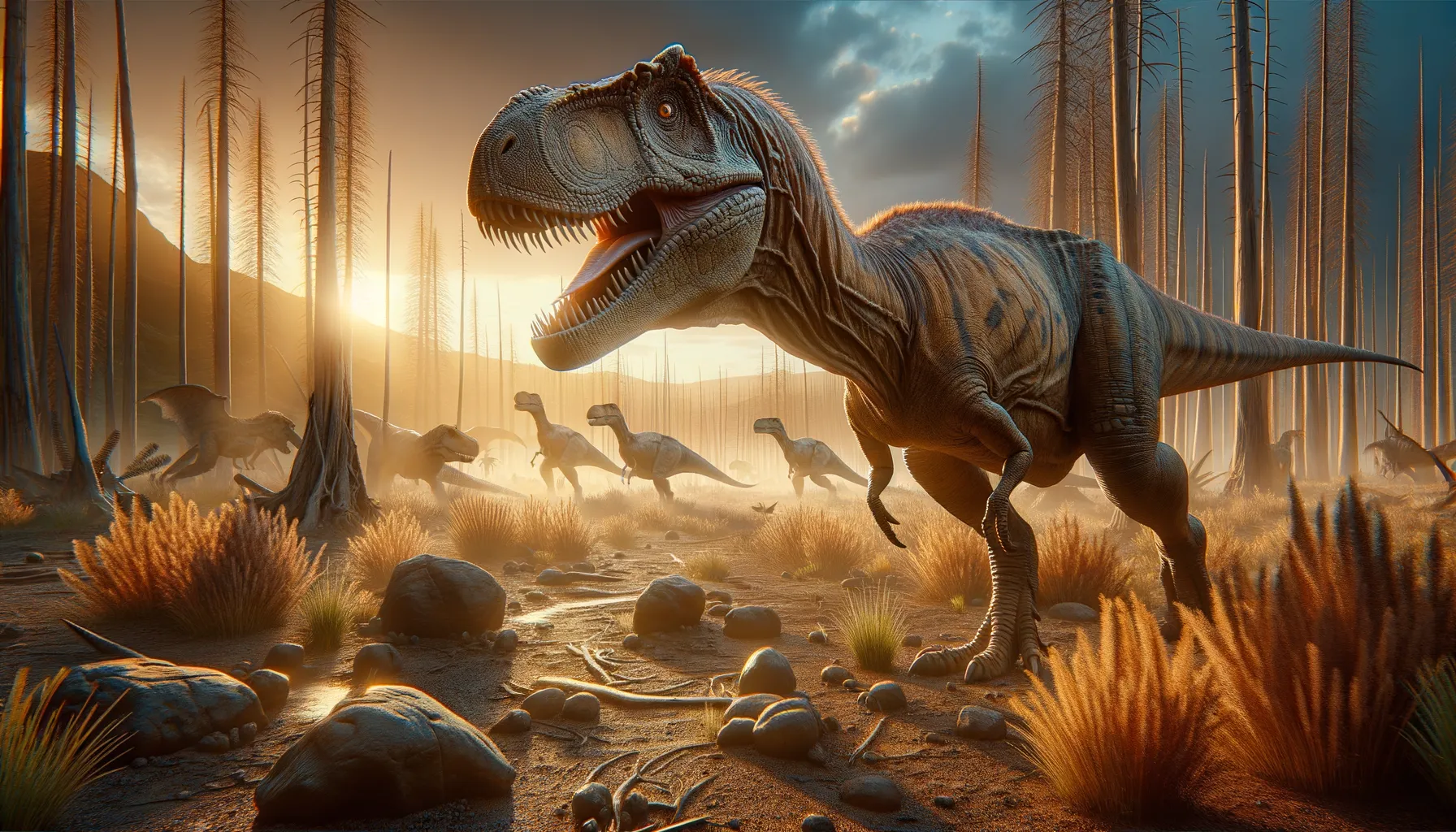
Neuquenraptor
Agile hunter from the Southern Hemisphere!
Period
Cretaceous
Length
Approximately 2 to 3 meters in length.
Height
Stood roughly 1.5 meters tall.
Weight
Estimated to weigh around 80 kilograms.
Neuquenraptor was a small, agile dinosaur that roamed parts of modern-day South America during the Late Cretaceous period. As a member of the Dromaeosauridae family, it was closely related to the famous Velociraptor. Neuquenraptor had a lightweight build which made it an efficient predator. Its discovery provided significant insights into the distribution of raptors in the Southern Hemisphere, expanding our understanding of this intriguing group of dinosaurs.
Diet
Neuquenraptor was a carnivorous dinosaur, primarily feeding on small to medium-sized animals. Its sharp, serrated teeth and agile body made it well adapted to capturing and consuming prey.
Hunting
Neuquenraptor likely hunted alone, using its speed and agility to surprise and capture prey. Its keen senses and sharp claws made it a formidable predator in its environment.
Environmental challenges
During the Late Cretaceous period, Neuquenraptor faced challenges such as competition with other carnivorous dinosaurs for food. Climatic changes could have affected the availability of prey and natural habitats, posing additional survival challenges. Adaptations in hunting strategies would have been essential to thrive in such a dynamic ecosystem.
Speed
Moderate speed, agile for hunting.
Lifespan
Estimated to have lived around 20 to 30 years.
First discovery
Discovered in 1996 in Argentina.
Fun Facts
- Neuquenraptor is known for being one of the first raptors discovered in South America, highlighting the continent's diverse dinosaur history.
- This dinosaur's name, Neuquenraptor, means 'thief of Neuquén,' a nod to the region in Argentina where its fossils were found.
- Neuquenraptor belonged to a group of feathered dinosaurs, making it quite the fashionable predator for its time.
- Unlike some of its larger relatives, Neuquenraptor was relatively small, about the size of a turkey, which likely made it a nimble hunter.
- The fossil remains of Neuquenraptor were discovered in 1996, but it wasn't scientifically described until nearly a decade later, in 2005.
- This dinosaur lived during the Late Cretaceous period, which was roughly 90 million years ago.
- Neuquenraptor is believed to have been a carnivore, possibly preying on small animals and insects in its ecosystem.
Growth and Development
Neuquenraptor likely grew at a steady pace from hatchling to adult, reaching full size within a few years. Its developmental stages would have involved significant changes, including the strengthening of muscles and honing of hunting skills. Parental care could have played a role in the early stages of life, offering protection and guidance.
Habitat
Neuquenraptor inhabited diverse environments, including forests and open plains, which provided ample opportunities for hunting. The warm, temperate climate of the Late Cretaceous would have influenced the vegetation and prey availability in its habitat. Water sources such as rivers or lakes were potentially important for sustaining life and biodiversity in its ecosystem.
Interaction with other species
Neuquenraptor interacted with a variety of other species, both competitors and prey, within its ecosystem. As a mid-level predator, it played a crucial role in maintaining the balance of its food web. Encounters with other carnivores could have resulted in competition for food or territory.
Natural lifespan
Its natural lifespan is estimated to have been around 20 to 30 years.
Reproduction
Neuquenraptor, like other theropods, likely laid eggs in nests and may have exhibited some degree of parental care. Fossil evidence suggests that nesting sites were common, highlighting the importance of reproductive strategies in its survival. Hatchlings would have been vulnerable and required a safe environment for growth and development.
Social behaviour
It is hypothesized that Neuquenraptor had solitary hunting habits, typical of Dromaeosaurids. However, social interactions could have occurred during mating seasons or when competing for resources. Vocalizations or visual displays might have been used to communicate with others.
Fossil locations
Neuquenraptor fossils have been predominantly found in Argentina, specifically in the Neuquén Province. These fossil discoveries have been crucial in understanding the distribution and diversity of Dromaeosaurids in South America. Such findings have helped paleontologists piece together the evolutionary history of predatory dinosaurs in the region.
